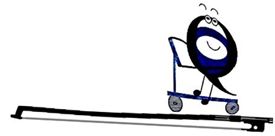
Continue to practice Level One Exercises until you can perform them consistently with great ease.
Regardless of one’s intellect or personal knack for playing, focused listening skills are needed in order to perform well. Actively listen!
Everyone has many activities and subjects to learn that require mental energy. Music is soothing and helps you to recharge your brain powers for higher learning. When practicing your instrument, enjoyment is gained by tuning in to the sound of the instrument and shifting your focus to auditory creative processes. Make your instrument Sing!
When performing Bow Changes and moving the bow from one bow-segment to another, you most probably noticed that different speeds of motion affected your bowing success.
The ability to control the amount of weight placed onto the strings, and then apply it to bowing motion is a crucial bowing skill to master.
Throughout the Quest, you have been in training to “get the feel” for the concept of placing Weight into Motion. Now that you have reached the stage of bowing performance, you will have a greater understanding of the set-up exercises. Practice and review the exercises periodically, so you can improve your playing mastery.

Rosin Preparing to Hold the Bow Stick Training Exercises Bowing Terminology Down-Bow Up-Bow
Bow-Hand Set-Up Finger Tasks and Functions The Thumb Meet ARC Finger Segments The Index-Finger
Bow-Hand Pronation The Center-Finger and Ring-Finger Bow-Hand Fulcrum Ring-Finger Propulsion Bass Bows
Pinky Bow-Tasks ‘Casting’ the Bow-Hand Bow-Wrist Tasks Rotational Inertia Arco Clay Smile Exercise Meet ANGLE
The Bow-Arm Box The Shoulder Arc Bow Contact-Point String Lanes Bow-Segment Mastery Bowing Exercises
Finding the Bow Contact-Point “Painting With Sound” Bowing Exercises Menu Bow Taps Bowing Traditions
Perform Down-Bows Perform Up-Bows The Art of the Bow-Change Articulations Staccato Legato
Mastery Checkpoint One Building Bow Control Bow Speed and Bow-Arm Motion Bow Planning and Distribution
Slow Moving Bow Strokes Individual Bow Segments Traveling the Bow Bowing Dynamics Mastery Checkpoint Two
Advanced Techniques Slurs and Articulations Slur Training Locating the Bow’s Balance Point Ricochet and Spiccato
Exploring Ricochet Ricochet Control Spiccato Training Spiccato Control Spiccato Brush Strokes
Multiple String Crossings Virtuosic Bow Strokes Arpeggio Bowing “Flying” Staccato Mastery Checkpoint Three
SCROLL’s List of Bow Strokes




